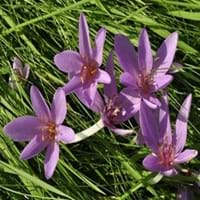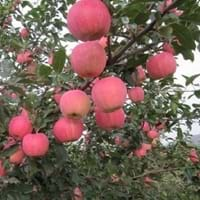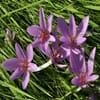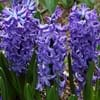Life Span
Perennial
Perennial
Type
Bulb or Corm or Tuber
Fruit
Origin
Hybrid origin
Eastern Europe, Southern Europe, Russia/Siberia, Southern Asia, Western Asia
Types
boissieri , cupanii , hungaricum , kesselringii
Not Available
Number of Varieties
Not Available
Habitat
Temperate Regions
Hillside, Mountain Slopes, Temperate Regions
USDA Hardiness Zone
Not Available
5-9
AHS Heat Zone
Not Available
8-1
Sunset Zone
21,22
6, 7, 8, 9, 14, 15, 16, 18, 19, 20, 21, 22
Habit
Clump-Forming
Oval or Rounded
Flower Color
Purple, Violet
Light Pink, Rose
Flower Color Modifier
Bicolor
Bicolor
Fruit Color
Not Available
Yellow, Red, Gold, Pink, Dark Red
Leaf Color in Spring
Green
Green
Leaf Color in Summer
Light Green
Green
Leaf Color in Fall
Several shades of Green
Green, Light Yellow, Brown
Leaf Color in Winter
Light Green
Light Green
Leaf Shape
Long Linear
Oblong
Plant Season
Spring, Fall
Spring, Fall
Sunlight
Full Sun, Partial Sun
Full Sun, Partial Sun, Partial shade
Growth Rate
Medium
Medium
The pH of Soil
Acidic, Neutral
Acidic, Neutral
Soil Drainage
Well drained
Well drained
Bloom Time
Late Summer, Early Fall
Early Spring
Tolerances
Drought
Drought
Where to Plant?
Ground
Ground
How to Plant?
Divison, From bulbs, Seedlings
Grafting, Seedlings, Transplanting
Plant Maintenance
Medium
Medium
Watering Requirements
Keep ground moist
Medium
In Summer
Lots of watering
Lots of watering
In Spring
Moderate
Moderate
In Winter
Average Water
Average Water
Soil pH
Acidic, Neutral
Acidic, Neutral
Soil Drainage Capacity
Well drained
Well drained
Sun Exposure
Full Sun, Partial Sun
Full Sun, Partial Sun, Partial shade
Pruning
no pruning required
Remove damaged leaves, Remove dead branches, Remove dead leaves
Fertilizers
All-Purpose Liquid Fertilizer
All-Purpose Liquid Fertilizer
Pests and Diseases
Dry root rot, Pest Free
Black rot, Leaf spot, Scab
Plant Tolerance
Drought
Drought
Flower Petal Number
Single
Single
Foliage Texture
Coarse
Medium
Foliage Sheen
Glossy
Matte
Attracts
Whiteflies
Birds
Allergy
Poisonous to grazing animals
Mouth itching, Throat itching
Aesthetic Uses
along a porch, deck or patio, Borders, Mixed Border, small hedge
Showy Purposes
Beauty Benefits
No Beauty Benefits
Not Available
Environmental Uses
Air purification
Air purification
Medicinal Uses
anti rheumatic, cathartic
Cancer, constipation, Diabetes, Diarrhea, Dysentry, Fever, Heart problems, Tooth ache
Part of Plant Used
Root
Fruits
Other Uses
Showy Purposes
Used As Food, Wood is used for making furniture
Used As Indoor Plant
No
No
Used As Outdoor Plant
Yes
Yes
Garden Design
Container, Cutflower, Foundation, Lawns and Turf, Mixed Border
Edible, Feature Plant, Fruit / Fruit Tree
Botanical Name
COLCHICUM 'Lilac Wonder'
Malus domestica Fuji
Common Name
Hybrid Autumn Crocus, Hybrid Meadow Saffron
Apple, Eating Apple, Fuji Apple
In Hindi
meadow saffron
Fuji Apple
In German
Herbstzeitlose
Fuji Apple
In French
Colchique d'automne
Fuji Apple
In Spanish
Estado de conservación
Fuji Apple
In Greek
meadow saffron
Fuji Apple
In Portuguese
Colchicum autumnale
Fuji Apple
In Polish
Colchicum autumnale
Fuji Apple
In Latin
autumnale
Fuji Apple
Phylum
Tracheophyta
Magnoliophyta
Class
Magnoliopsida
Magnoliopsida
Family
Liliaceae
Rosaceae
Clade
Angiosperms, Monocots
Angiosperms, Eudicots, Rosids
Tribe
Not Available
Not Available
Subfamily
Not Available
Not Available
Number of Species
Not Available
Importance of Meadow Saffron and Fuji Apple
Want to have the most appropriate plant for your garden? You might want to know the importance of Meadow Saffron and Fuji Apple. Basically, these two plants vary in many aspects. Compare Meadow Saffron and Fuji Apple as they differ in many characteristics such as their life, care, benefits, facts, etc. Every gardener must at least have the slightest clue about the plants he wants to plant in his garden. Compare their benefits, which differ in many ways like facts and uses. The medicinal use of Meadow Saffron is anti rheumatic and cathartic whereas of Fuji Apple is Cancer, constipation, Diabetes, Diarrhea, Dysentry, Fever, Heart problems and Tooth ache. Meadow Saffron has beauty benefits as follows: No Beauty Benefits while Fuji Apple has beauty benefits as follows: No Beauty Benefits.
Compare Facts of Meadow Saffron vs Fuji Apple
How to choose the best garden plant for your garden depending upon its facts? Here garden plant comparison will help you to solve this query. Compare the facts of Meadow Saffron vs Fuji Apple and know which one to choose. As garden plants have benefits and other uses, allergy is also a major drawback of plants for some people. Allergic reactions of Meadow Saffron are Poisonous to grazing animals whereas of Fuji Apple have Mouth itching and Throat itching respectively. Having a fruit bearing plant in your garden can be a plus point of your garden. Meadow Saffron has no showy fruits and Fuji Apple has showy fruits. Also Meadow Saffron is not flowering and Fuji Apple is not flowering . You can compare Meadow Saffron and Fuji Apple facts and facts of other plants too.





